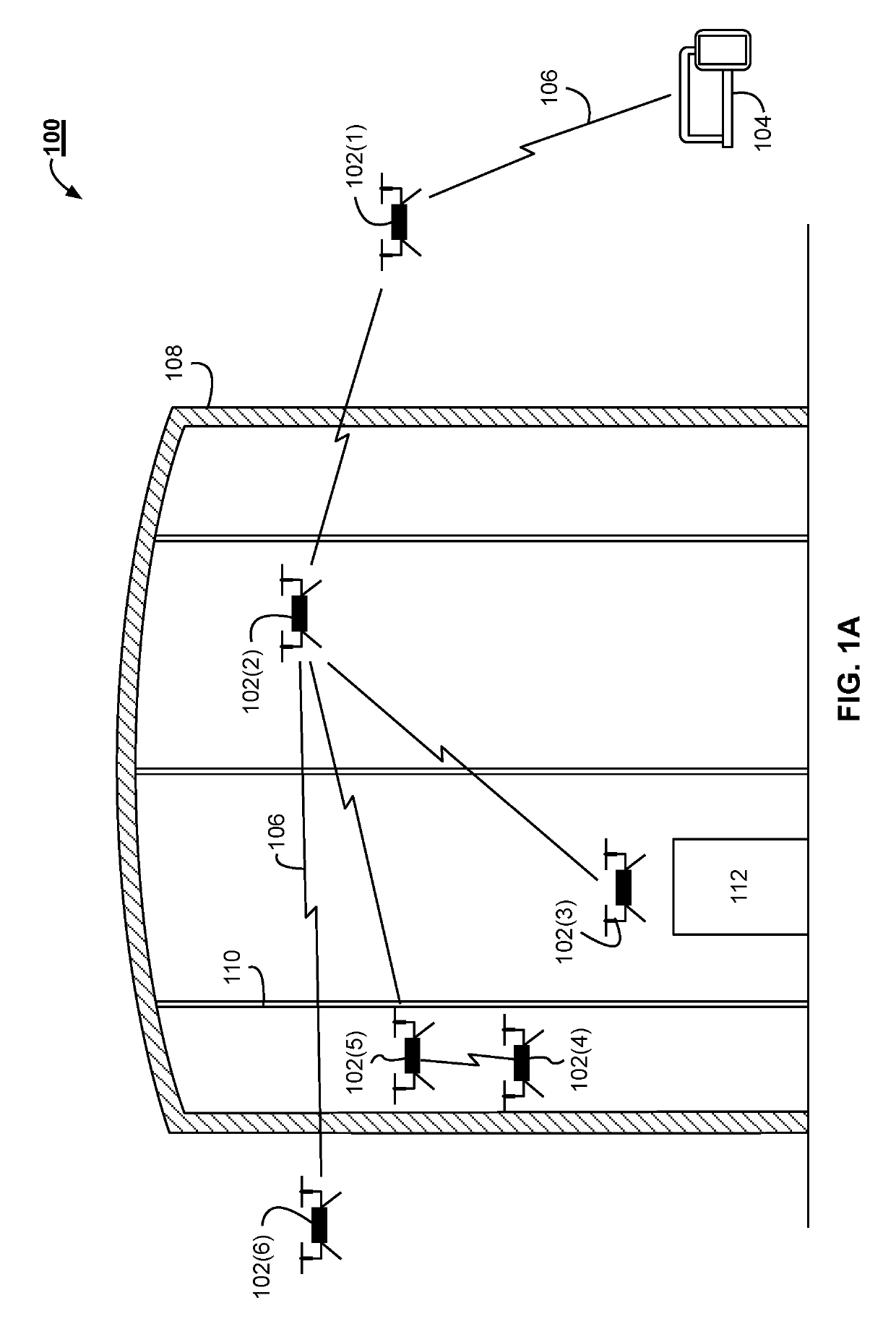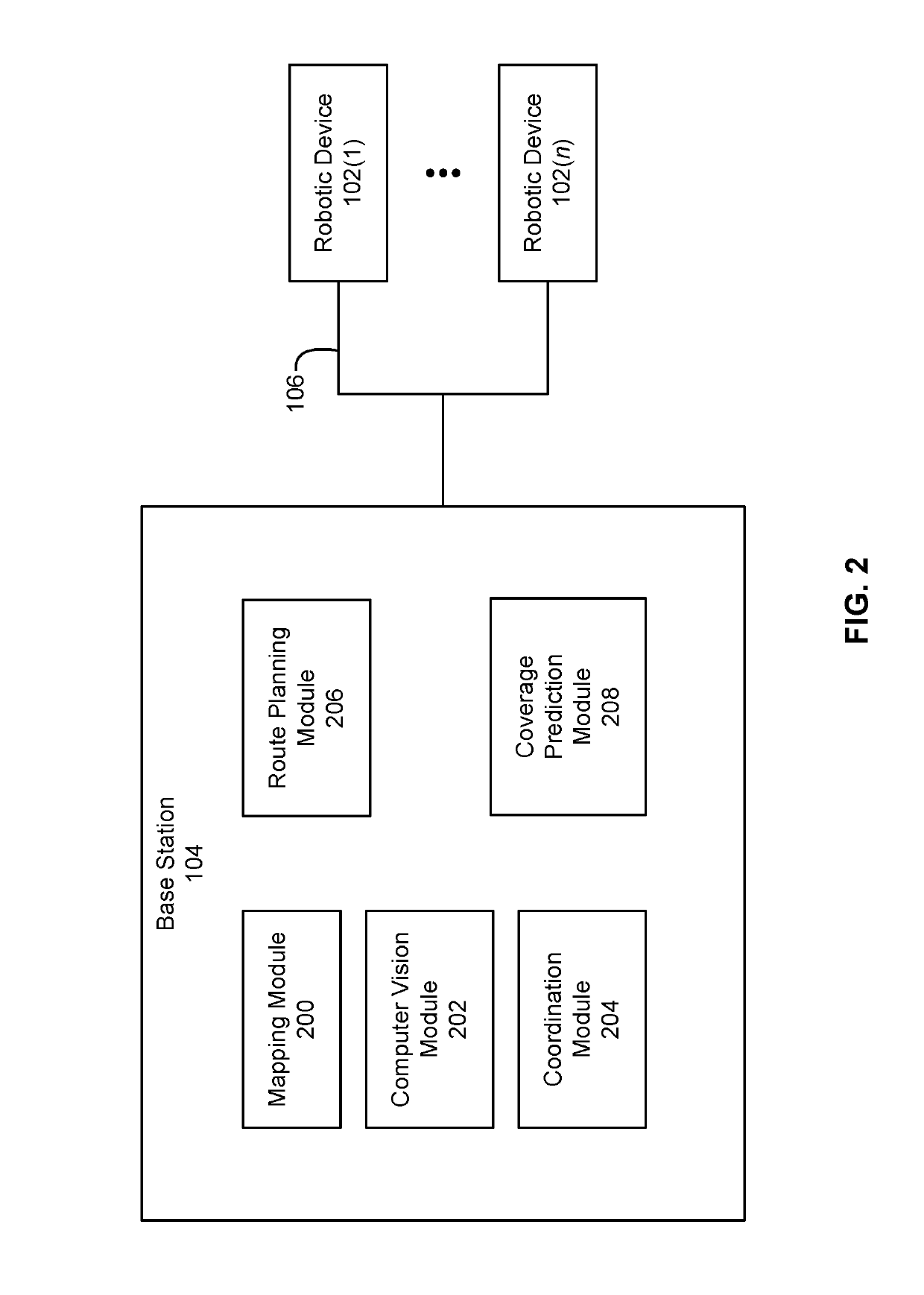Autonomous robotic technologies for industrial inspection
a robotic technology and industrial inspection technology, applied in the direction of image enhancement, instruments, and using reradiation, can solve the problems of increasing the complexity of industrial inspections and and achieve the effect of reducing the risk of overall industrial failur
- Summary
- Abstract
- Description
- Claims
- Application Information
AI Technical Summary
Benefits of technology
Problems solved by technology
Method used
Image
Examples
Embodiment Construction
[0025]The various concepts introduced above and discussed in greater detail below may be implemented in any of numerous ways, as the described concepts are not limited to any particular manner of implementation. Examples of specific implementations and applications are provided primarily for illustrative purposes.
[0026]FIG. 1A illustrates an example system 100 for industrial inspection. The system 100 includes a plurality of robotic devices 102. While robotic devices 102 may be any form of robotic device, including mobile devices, stationary devices, wheeled devices, legged devices, rolling devices, crawling devices, flying devices, submersible devices, or any combination thereof, aerial robotic drones are demonstrated in the exemplary system of FIG. 1A. The robotic devices 102 may be homogeneous devices of the same type. In some implementations, the robotic devices 102 can include a heterogeneous set of devices. The heterogeneous set of devices can include different types of roboti...
PUM
 Login to View More
Login to View More Abstract
Description
Claims
Application Information
 Login to View More
Login to View More - R&D
- Intellectual Property
- Life Sciences
- Materials
- Tech Scout
- Unparalleled Data Quality
- Higher Quality Content
- 60% Fewer Hallucinations
Browse by: Latest US Patents, China's latest patents, Technical Efficacy Thesaurus, Application Domain, Technology Topic, Popular Technical Reports.
© 2025 PatSnap. All rights reserved.Legal|Privacy policy|Modern Slavery Act Transparency Statement|Sitemap|About US| Contact US: help@patsnap.com



